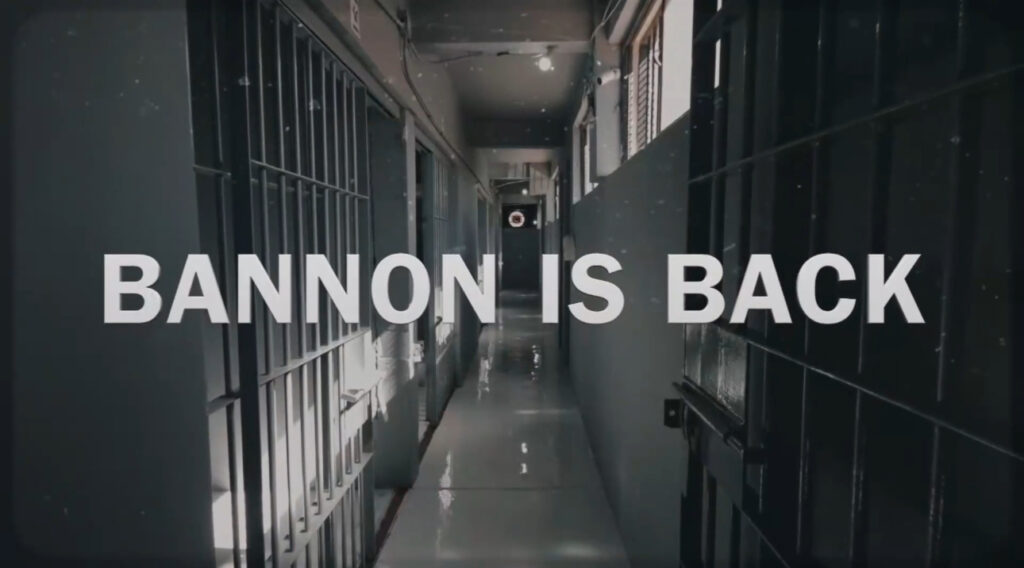Steve Bannon, the former Chief Strategist for Donald Trump and host of the ‘War Room,’ made headlines upon his release from the Federal Correctional Institution in Danbury, Connecticut, where he served four months for contempt of Congress. His release was celebrated by his daughter, Maureen Bannon, who expressed her joy on social media with an enthusiastic message. The timing of his release is significant as he returns to the media landscape, ready to re-engage with his audience and political allies after a contentious period in custody. This event marks a crucial moment for Bannon, who has become a polarizing figure in American politics, particularly in relation to the events surrounding January 6, 2021.
Upon his return to the ‘War Room’ broadcast, Steve Bannon wasted no time in delivering a fiery monologue. He characterized his imprisonment as an act of political power-play orchestrated by former House Speaker Nancy Pelosi. Bannon argued that his time in prison was intended to undermine his influence and break his spirit, but instead, he claimed it has only intensified his resolve and the impact of his platform. He made it clear that he believes the interruptions to his activism have ultimately backfired, strengthening both his message and his reach. This rhetoric reflects his ongoing battle against what he describes as a politicized justice system and his commitment to continuing his political commentary.
The narrative surrounding Bannon’s incarceration emphasizes themes of martyrdom and resilience. His framing of Pelosi’s actions as politically motivated suggests a larger scheme to silence dissenting voices within conservative circles. By positioning himself as both a victim and a warrior in the political arena, Bannon seeks to galvanize his supporters and reinforce his credibility among far-right factions. His comments may rally those who feel similarly disenfranchised by the mainstream political establishment and reinforce a sentiment of resistance against perceived governmental overreach.
Bannon’s return to the public eye comes at a strategically significant time, as he prepares to address the media in a press conference scheduled for later that afternoon at the Lowes Regency Hotel in New York City. This event not only serves as a platform for Bannon to communicate his experiences and viewpoints but also as a means to reconnect with his audience and further invigorate his support base. His planned address is expected to underscore his ongoing commitment to the conservative movement and immediately set the stage for his next steps in the political landscape.
In the broader context, Bannon’s release and the ensuing media coverage invite discussions about the implications of his political strategies and the motivations behind the legal actions taken against him. The division in American politics remains pronounced, with figures like Bannon epitomizing a fervent challenge to traditional political norms. His insistence on portraying his experience as an empowering one may resonate with a segment of the population that perceives the political climate as increasingly adversarial towards their beliefs and representatives. This underscores a key aspect of contemporary political discourse, where personal narratives are often intertwined with ideological battles.
Overall, Steve Bannon’s return after serving time in prison not only revitalizes his career but also encapsulates the ongoing struggles of political figures navigating the contentious landscape of modern American politics. His announcement, paired with the public support from his daughter and enthusiastic followers, signals a reinvigorated mission to influence conservative ideology and challenge perceived injustices. Bannon’s approach will likely continue to ignite conversations and debates surrounding the intersections of power, resistance, and the role of media in political activism. The dynamics at play here will undoubtedly shape the coming discussions leading up to the next election cycle and further define the contemporary political narrative.

